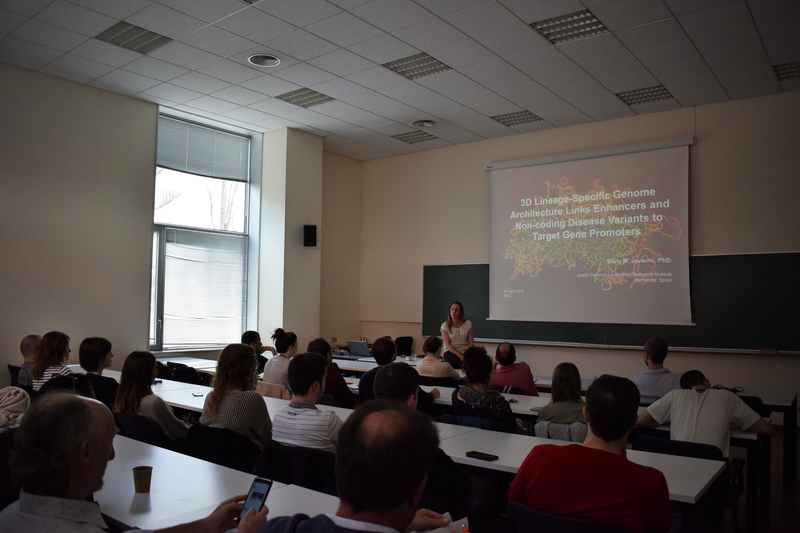Objectives
This seminar is part of the "Bioinfo4Women" series.
To download the presenttaion, please click here.
Abstract: Human cells bears in its nucleus about 2 meters of DNA containing the genes that shape the being and the manner in which is packed regulates its function. Long-range physical interactions between regulatory elements and gene promoters play key roles in transcriptional regulation. The vast majority of interactions are uncharted, constituting a major missing link in understanding genome control. Genome-wide association studies have identified thousands of single nucleotide polymorphisms (SNPs) associated with common disorders but most of them expand non-coding regions, being difficult to be interpreted. Interestingly these non-coding SNPs cluster on DNA hypersensitivity sites, hallmark of regulatory element, pointing out a potential role of these genetic variants in the deregulation of target genes. For all these reasons, a new technique called promoter capture Hi-C (PCHi-C) has been implemented. PCHi-C allows the genome-wide systematic identification of the interacting regions that are in physical contact with 31,253 human promoters. Applying this cutting-edge technology in 17 human primary hematopoietic cell types, it has been shown that promoter interactions are highly cell type specific and enriched for links between active promoters and epigenetically marked enhancers. Promoter interactomes reflect lineage relationships of the hematopoietic tree, consistent with dynamic remodeling of nuclear architecture during differentiation. Interacting regions are enriched in genetic variants linked with altered expression of genes they contact, highlighting their functional role. With this approach, non-coding disease variants have been connected to putative target promoters, prioritizing thousands of disease-candidate genes and implicating disease pathways. These results demonstrate the power of primary cell promoter interactomes to reveal insights into genomic regulatory mechanisms underlying common diseases.
 Bio: Biola M. Javierre is a reference in the study of 3D chromatin organization with special emphasis on describing physical interactions between regulatory elements and target genes. Key achievements include the design of new experimental and computational methods for studying the DNA packaging within the nucleus, the novel description of promoter interactomes of human blood cell types and the pioneer interpretation of non-coding SNPs. Since march she is a junior PI at the Josep Carreras Reseach Center in Barcelona.
Bio: Biola M. Javierre is a reference in the study of 3D chromatin organization with special emphasis on describing physical interactions between regulatory elements and target genes. Key achievements include the design of new experimental and computational methods for studying the DNA packaging within the nucleus, the novel description of promoter interactomes of human blood cell types and the pioneer interpretation of non-coding SNPs. Since march she is a junior PI at the Josep Carreras Reseach Center in Barcelona.

